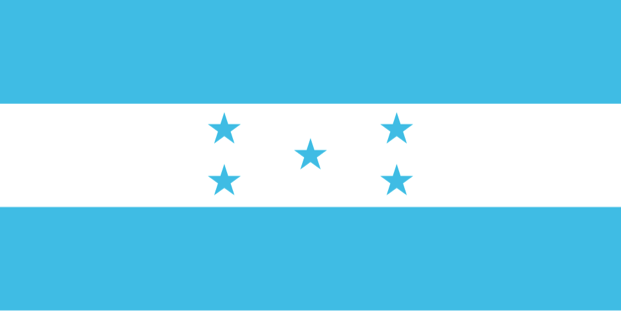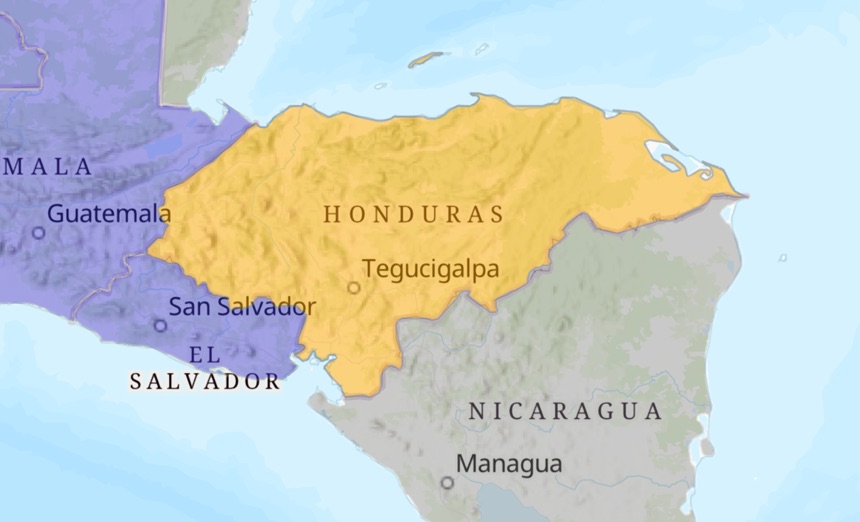After decades of instability and political violence, Honduras is still marked by high levels of violent crime and insecurity. Small arms and light weapons are easily accessible to the civilian population, through both legal and illegal means, with weapons mostly originating from neighbouring countries in Central America and from the United States. Despite various amnesty initiatives launched by the Honduran government in order to register privately owned weapons, the uncontrolled presence of these weapons throughout the territory still constitutes a major threat to security in the country and the region.
In terms of weapons and ammunition management, Honduras has implemented a national legal framework on the possession and use of weapons, but its weapons and ammunition management capacities are considered insufficient to prevent the proliferation of small arms and light weapons. The country’s weapons and ammunition national stockpiles are reportedly particularly vulnerable, and registration and disposal procedures lack transparency. At the same time, organisations such as the Program of Assistance for the Control of Arms and Munitions (PACAM) of the Organization of American States (OAS) and the HALO Trust are working with the Ministry of Defence, the National Police, and the Public Ministry to establish and oversee weapons and ammunition destruction and develop stockpile management capacities.
Source: Angela Escher and Marianne Widmer, “Weapons are everywhere in Honduras,” Arms Trade: Controversy and Opportunities, KOFF Newsletter No. 14, September 2016, https://reliefweb.int/report/world/koff-newsletter-no-147-september-2016-arms-trade-controversy-and-opportunities; "Honduras,” Halo Trust, https://www.halotrust.org/where-we-work/latin-america/honduras/; Steven Dudley, Firearms Trafficking in Honduras (Washington, DC: InsightCrime and Asociación para una Sociedad Más Justa, 2017), https://insightcrime.org/investigations/firearms-trafficking-in-honduras/; Matthias Nowak, Measuring Illicit Arms Flows: Honduras (Geneva: Small Arms Survey, 2016), https://www.smallarmssurvey.org/resource/measuring-illicit-arms-flows-honduras-research-note-62.
Launch the country dashboard
Further information
Accidental explosions
Since the Small Arms Survey began collecting data in 1979, one accidental explosion has been reported in Honduras.
Table 1. Accidental explosions in Honduras (1979–2021)
Year | Location | Owner/manager | Deaths | Injuries |
1993 | Naco | State (military) | 2 | - |
Source: “Unplanned Explosions at Munitions Sites (UEMS) Database,” Small Arms Survey, updated December 15, 2021, https://smallarmssurvey.org/database/unplanned-explosions-munitions-sites-uems.
Cases of diversion
Several cases of diversion have been reported in Honduras, at least three of which included ammunition.
Table 2. Cases of diversion of arms, ammunition and explosives in Honduras
Year | Location | Description |
2011 | Tegucigalpa | It is reported that 300 FAL rifles and 300,000 rounds of 5.56 mm bullets disappeared from the armoury of the Honduran Police Special Forces Unit known as 'The Cobras'. According to media investigations, the weapons and ammunition were sold to a narco-trafficking cartel in Guatemala. |
2010 | Ocotal, Francisco Morazán | It is reported that 22 RPG-7 rocket launchers and their ammunition were stolen from the warehouse of the Armed Forces Logistical Support Command (CALFFAA). |
2007 | Tegucigalpa | It is reported that 100 Pietro Beretta rifles, 40 Galil rifles, 9 M16 rifles, 5 gas-grenade launchers and 32 Czech-made pistols were stolen from the armoury of the Honduran Police Special Forces Unit known as 'The Cobras'. |
2004 | Choloma | The Honduran police seized a cache of military weapons originating from national military stocks, which were reportedly destined for the Revolutionary Armed Forces of Colombia (FARC). It included 163 M16s, 26 AK-47s, 11 M60s, 4 FAL, 9 grenade launchers, 5 rocket-propelled grenades, 54 cases of ammunition, and 374 M16 and AK-47 cartridges. |
Source: Steven Dudley, Firearms Trafficking in Honduras; “Se roban 22 lanzacohetes RPG-7 del Comando de Apoyo Logístico,” El Heraldo, February 7, 2012, https://www.elheraldo.hn/elheraldoplus/investigaciones/se-roban-22-lanzacohetes-rpg-7-del-comando-de-apoyo-logistico-GKeh617346; “Armas de los Cobras, vendidas en Guatemala,” El Heraldo, April 7, 2014, https://www.elheraldo.hn/honduras/armas-de-los-cobras-vendidas-en-guatemala-OOEH564390.
Disposal
To decrease the above-mentioned risks of accidental explosions and diversion, Honduras has disposed of its ammunition since 2013.
Table 3. Disposal of tonnes of ammunition in Honduras
Year | Tonnes of ammunition |
2021 | N/A |
2020 | N/A |
2019 | N/A |
2018 | N/A |
2017 | N/A |
2016 | N/A |
2015 | N/A |
2014 | N/A |
2013 | 72.12 |
Source: "Process of Destruction of Munitions in Disuse Begins in Honduras with OAS Support,” OAS, May 7, 2013, https://www.oas.org/en/media_center/press_release.asp?sCodigo=E-179/13.
Needs
No needs have been reported for Honduras.



